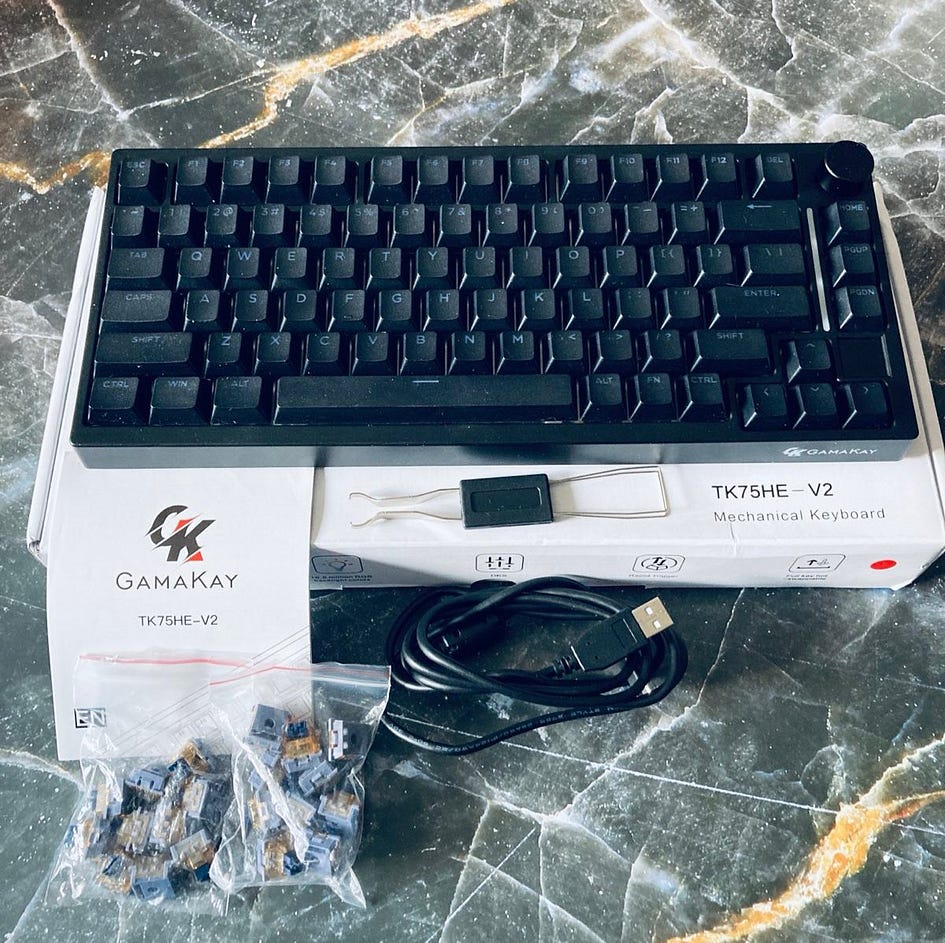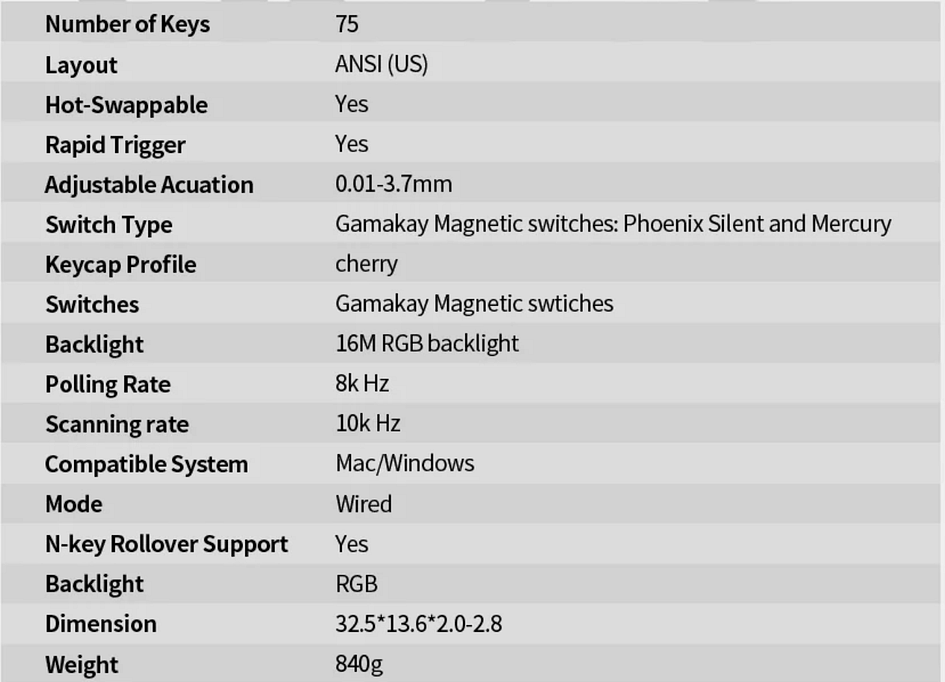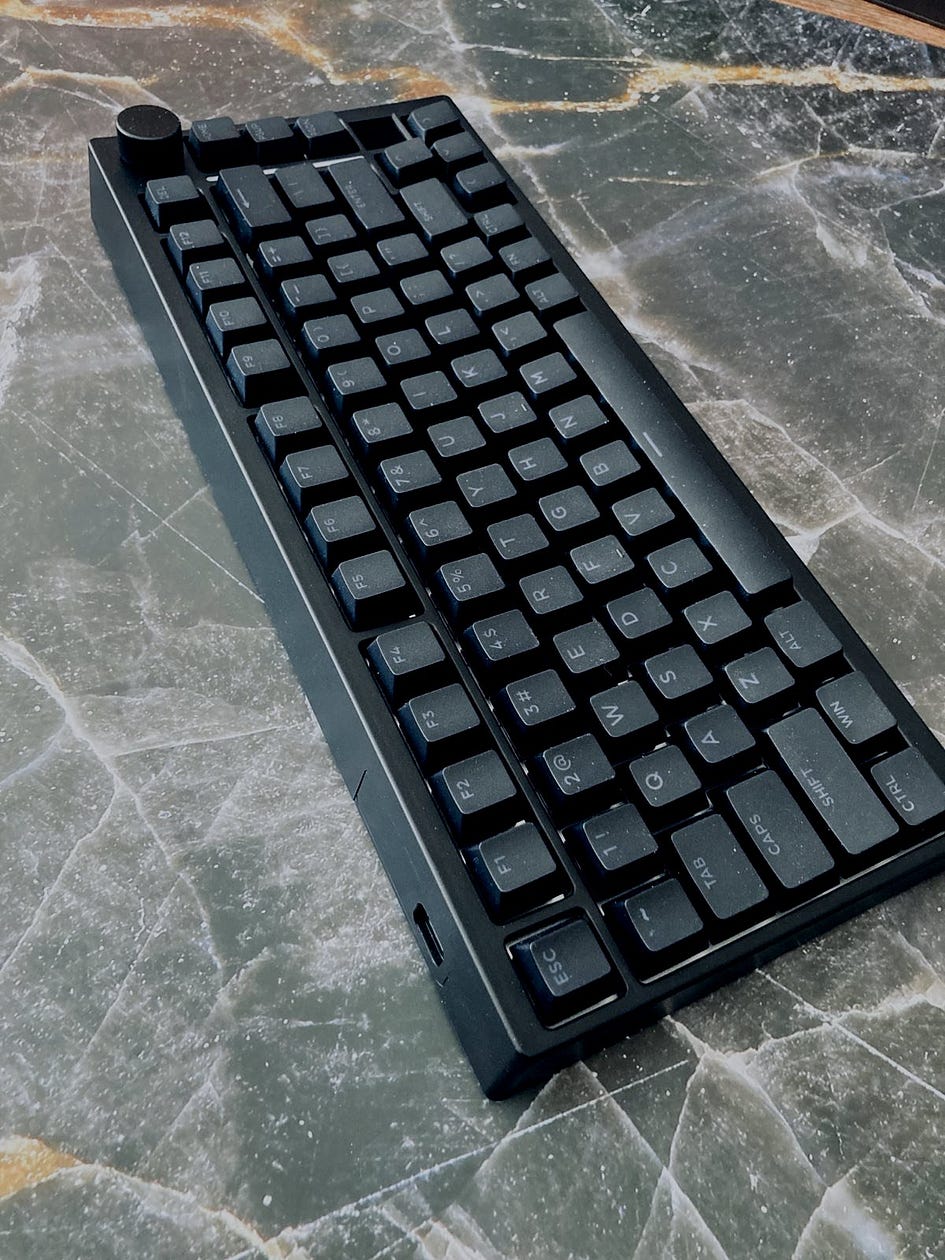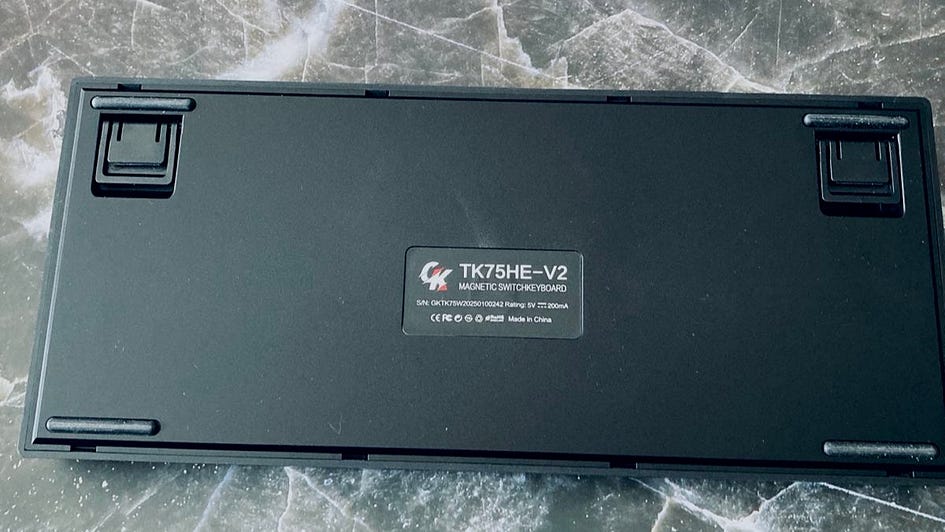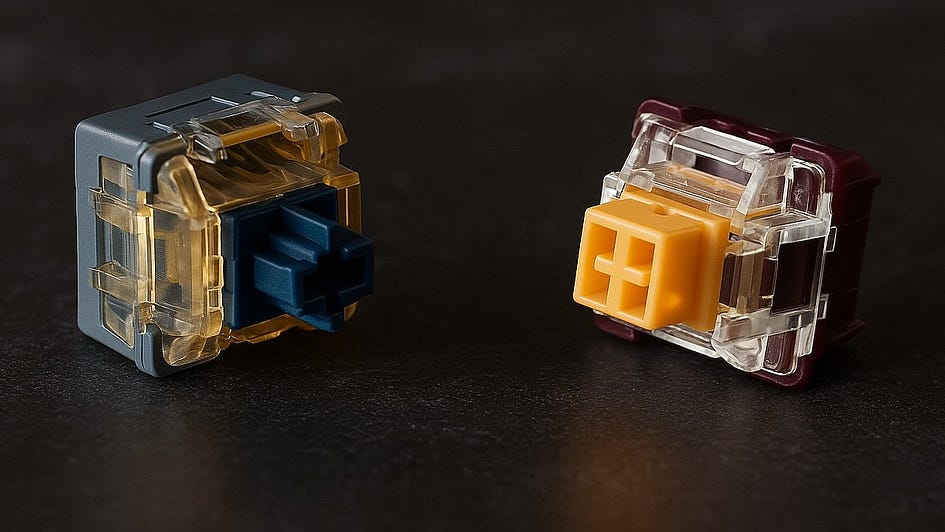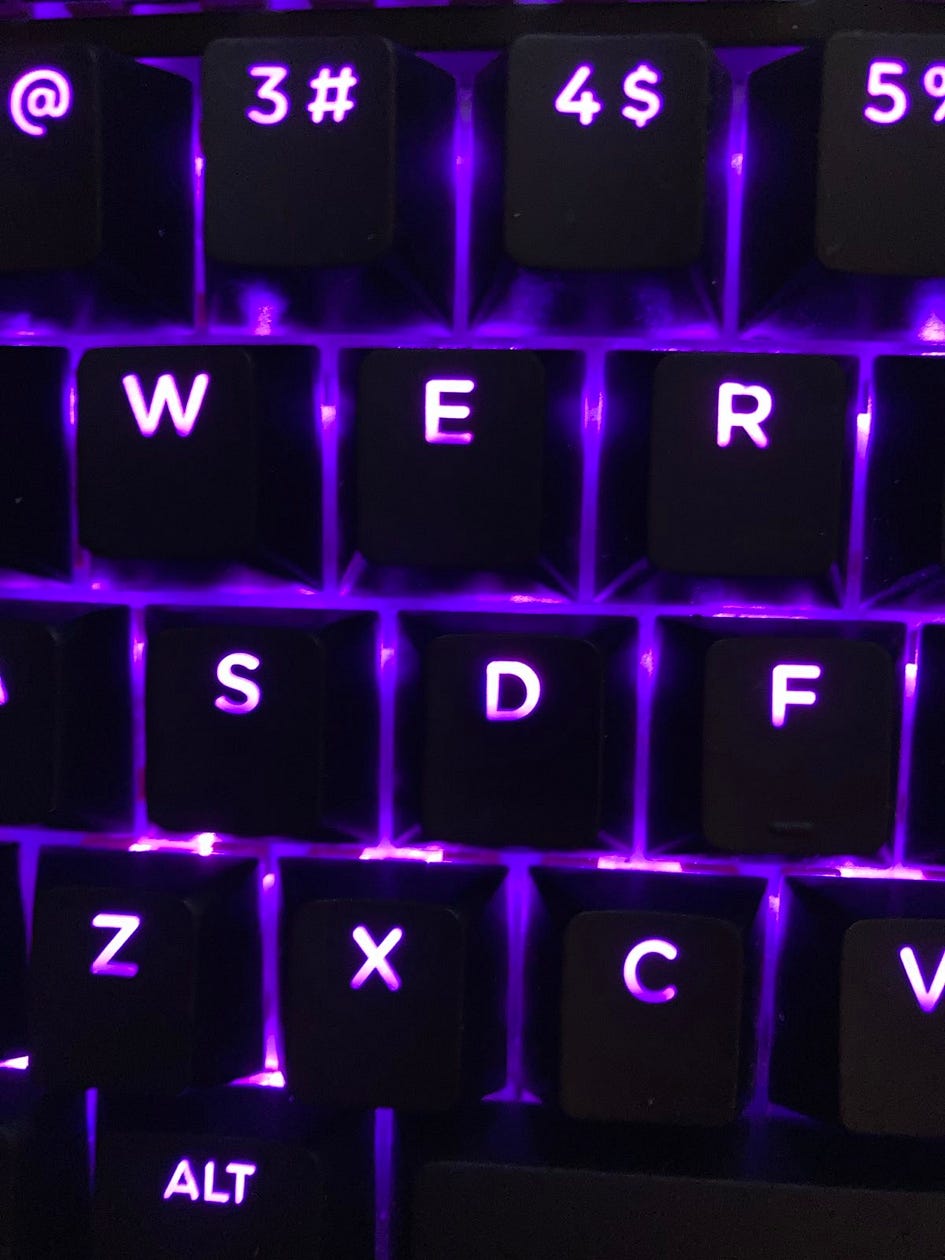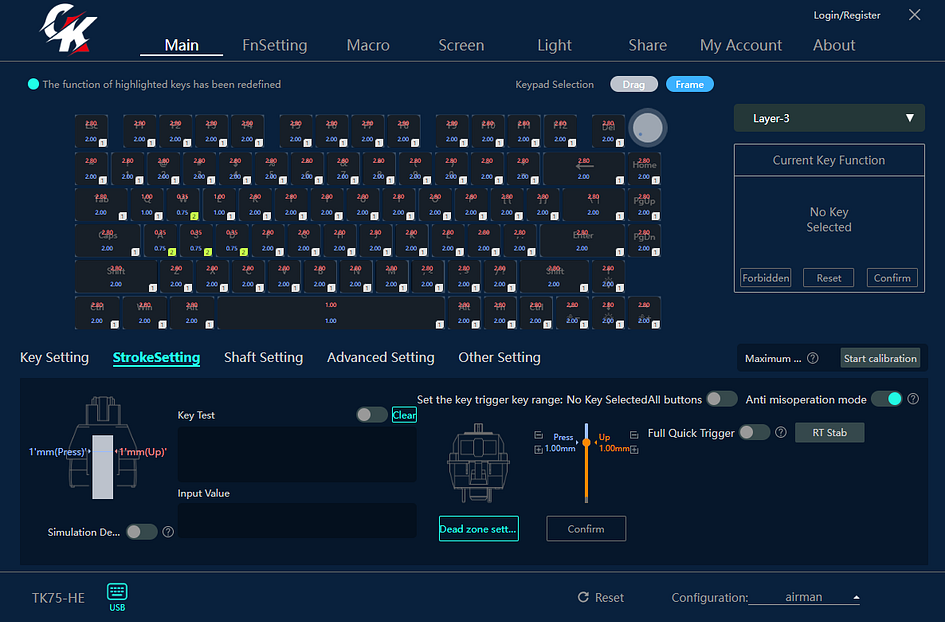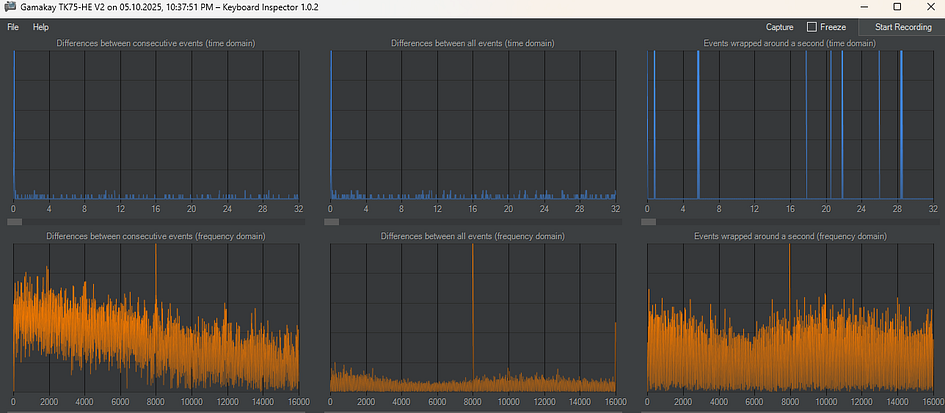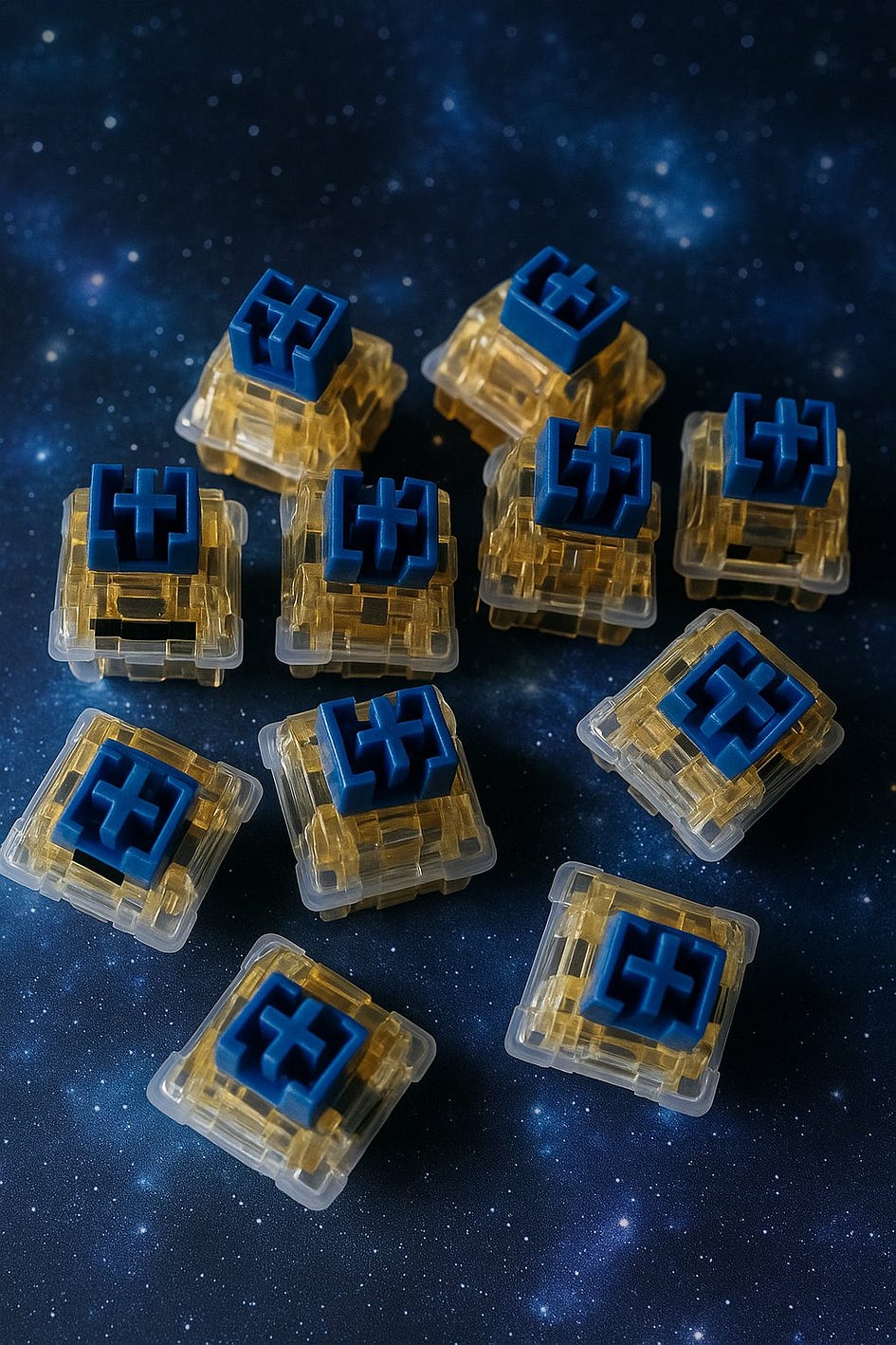GamaKay TK75HE v2 — Silent Magnetic Gaming with Integrated TFT Control
Magnetic keyboards are everywhere now. Hall Effect switches, adjustable actuation, analog input — you name it. But if you want a quiet keyboard for gaming or work, you’re pretty much out of luck. Most boards are loud, sharp, and built with tactility over silence. That’s what makes the Gamakay TK75HE v2 stand out. It’s one of the few magnetic keyboards that takes silence seriously, without cutting corners on performance. On top of that, it throws in a functional TFT screen for quick settings, real-time stats, and a bit of flair. In a market crowded with loud options, the TK75HE v2 is doing something different.
Disclaimer: This unit was sent out to me for review, however, the opinions are mine only.
Unboxing and Sound Test
In the box you will find:
- Gamakey TK75HE v2 Gaming Keyboard
- manual
- USB-A to C cable
- switch/keycap puller
The additional switches you see are not a part of the standard package.
Bottom line? Simple unboxing. I wish they added spare switches as a default.
Specs and Features
Bottom line? Specs listed on the website are incomplete or incorrect in some aspects.
Design and Build Quality
The Gamakay TK75HE V2 keeps things simple and doesn’t mess around trying to be something it’s not. The design plays it safe — it’s clean, professional, and easy on the eyes. It’s got that sleek, minimal look that just fits anywhere, whether you’re working or gaming. No wild shapes or over-the-top RGB lighting screaming “gamer” here, and honestly, that’s a nice change. Instead, it adds just enough personality with things like a subtle LED bar along the side and a small TFT screen.
Underneath, you will find adjustable feet (two positions) that don’t fold under pressure, which is a good thing. There are also rubber feet to stabilize the keyboard. There is also a place to store a dongle under the right foot, but my unit is only wired (even though I’ve seen some reviews of GamaKay TK75HEv2 in tri-mode version), which is indicated by the USB-C port at the top of the case.
The TK75HE V2 is made out of ABS plastic entirely. It’s not top ABS quality, but nothing about it feels flimsy or low-end either. I’d compare it with the first DrunkDeer keyboards, so it’s pretty average in my opinion. However, the whole thing feels solid in the hands, and you can tell right away it’s built to handle everyday use without falling apart. When you’re typing, there’s zero flex in the frame, which isn’t something you normally expect from keyboards in this price range. The edges are nicely finished, everything fits tight, and there’s no annoying creaking or loose spots when you pick it up.
Stabilizers are plate-mounted, and there is a foam-dampened case and a gasket-mounted PCB as well.
Bottom line? ABS plastic could be of a better quality; the quality is acceptable, but could also be better.
Switches
As in the previous models, you get to choose between two types of switches:
They are slightly different in feeling, but I’d call them both “muddy”. What I mean is that they are, despite not being heavy to press, a bit on the muddier side of switches. They feel original, not scratchy but not crisp either — it’s as if you pressed something down and felt some sponge underneath. You get the feeling.
Both are box-mounted, feeling stable and pretty consistent, and lubed well by the factory.
From those two, the Mercuries are a louder (not labelled as silent) option and have a crisper feeling, therefore, I preferred them while gaming. Fortunately, I could test them both out, thanks to GamaKay.
Bottom line? Mercuries are louder but feel a bit better for gaming. Phoenix ones, however, are truly quiet.
Keycaps
These are PBT keycaps in Cherry profile, so they’re built to last and shouldn’t get that greasy shine anytime soon — that’s the theoretical truth. However, the shine developed pretty quickly on my copy, and the texture used on them was off, too. But I have to admit that the legends are sharp and easy to read (even being dark in color), and the RGB lighting shines through them nicely. I’m a fan of shine-through keycaps, and I liked them in GamaKay, even though they’re not perfect.
They’ve got a premium feel when you’re typing — there’s just enough texture so they don’t feel slick at first (too bad the texture wears off), and they’re pretty thick too, which adds to that solid, quality vibe.
Due to the imperfect RGB lighting, some parts of the keycaps are not lit up entirely, which you can see above. The legends are also sloppy in some parts. Check the letter R in the picture above.
Bottom line? I like that the keycaps are shine-through, which adds to the RGB and makes your life easier. I don’t like that they are sloppy sometimes and develop a shine.
Software
There’s a downloadable driver as well as web-based software labelled as QMK software. But it’s not QMK — QMK is a software made for keyboards, something like Windows, Linux, or macOS for computers. You can program it yourself (which has more possibilities), use the web configurator (easier), or, if your keyboard supports VIA, use the software, which is the easiest way, but lacks a lot of features and only supports some boards. And this GamaKay “version” is just the normal driver put online. And there are some minor and major issues with the software and the TFT screen’s productivity. It’s still that OEM software so many Chinese brands use it — I get it, it’s easier and cheaper to implement it than to develop their driver. But this software is clunky and not intuitive, and has its own problems. It’s slow, it can mess up your profiles, and overall UI and vocabulary/translation seem off. It works, though, and has all the desired (most popular) features (switch calibration, DKS, SOCD, Mod Tap, Rapid Trigger, etc), but it’s about time to try something else.
Fortunately, there’s also a web-based software, so at least that, but it looks the same, and it requires you to install an .exe file to start it up (which contradicts the idea of web-based, driverless software).
And there comes the 0.85″ TFT Display: you can customize with system stats, animations, or personalized graphics. A nice addition to the magnetic keyboard, actually, one of the first ones I’ve seen in this space. However, it’s not perfect and has many flaws. Uploading graphics and animations is slow, the time synchronization doesn’t work as intended (you have to open the driver every time you reboot your PC to make it work, weird), the LED bar doesn’t work via options or shortcuts most of the times, the system specs are nullified, etc etc. It’s just a fully-fledged feature and requires a new firmware update, to say the least. That’s a pity it hasn’t been fixed yet.
Bottom line? OEM software is a lazy option, but it works ok, at least most of the time. It really needs some polishing, though, and the TFT screen implementation leaves a lot to be desired.
Latency and Performance
The manufacturer claims the latency is 0.06ms, true 8k polling, and 10k scanning rate. As you can see above, the polling/scanning data holds, adding to the overall low latency of the keyboard. However, the 0.06 ms is far-stretched. In my testing, a single key press registered at around 0.23 ms, which is still a very good and respected value. The whole latency of the keyboard is more than that, but also very responsive, but I wish the manufacturers would start providing some real data, not a marketing sales pitch.
The advertised 0.1 Actuation Point is there and works well, however, the 0.01 RT could be more precise, as I witnessed some irregularities here.
In my gaming experience, the GamaKay TK75HE v2 performed well, and I had no hiccups, cut-offs, issues with connectivity, or sensitivity. Everything feels smooth when you’re moving around, and the keys respond almost the moment you touch them. There’s no noticeable lag between hitting a key and seeing the action happen on your screen.
Bottom line? Responsive, agile, and really good performance.
Summary
Wrapping it up, I’m a bit torn on the TK75 HE v2. On one side, it delivers where it counts — super fast and responsive, that true 8K polling rate keeps latency low, and it holds up great both in gaming and regular typing. The shine-through keycaps look good when the RGB kicks in, the lighting itself is nicely done, and the build quality, while mostly plastic, is decent enough for the price. Plus, if you’re after a quieter setup for late-night gaming or just want to avoid the constant clatter, those Phoenix Silent switches are a huge win.
But then you start noticing the rough edges. The software feels half-baked, the TFT screen is more of a gimmick than anything really useful, and some of the smaller details just don’t hit the mark — like sloppy keycap legends and even typos on the manufacturer’s website, which doesn’t exactly inspire confidence.
So, would I recommend it? Yeah, for under 100 bucks, especially if silent gaming is high on your list, it’s worth a look. Just go in knowing it’s not perfect, and you’ll have to live with a few quirks along the way.
Bullet Points
- The only magnetic keyboard (apart from DrunkDeer G75) to feature silent switches…
- which get the job done and are silent
- pretty nice RGB
- Acceptable built quality, but far from premium
- minimalistic unboxing
- pretty low latency
- True 8k polling rate
- Both types of switches feel a bit “muddy” but are pretty ok overall
- Some keycap legends are sloppy-printed in my copy
- Phoenix switches (not the silent ones) are a bit better in feel, in my opinion
- OEM software/web software gets the job done; however, it can sometimes be buggy
- The TFT screen is not a fully-fledged feature, as it is buggy and acts strangely from time to time
- To synchronize time, you need to open the driver/web driver.
- Some info on the official website is not true and inconsistent (perhaps due to bad translation and typos), which looks unprofessional
- The only good offer for those who want silence/live in a noise-sensitive environment
Get this keyboard from the GamaKay website
or Amazon
Disclaimer: This review is not a paid endorsement. I want to ensure transparency and let you know that I am not receiving any compensation, monetary or otherwise, for evaluating or discussing this tech product.


